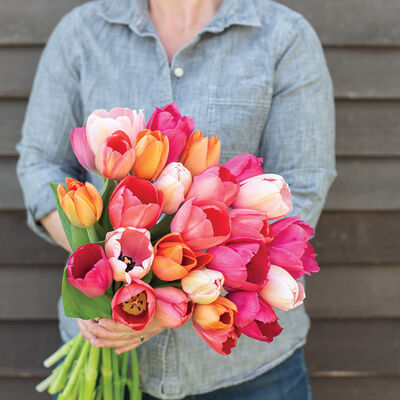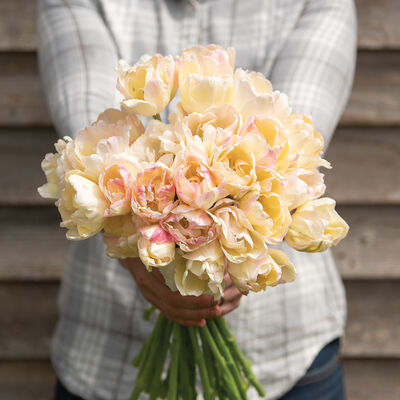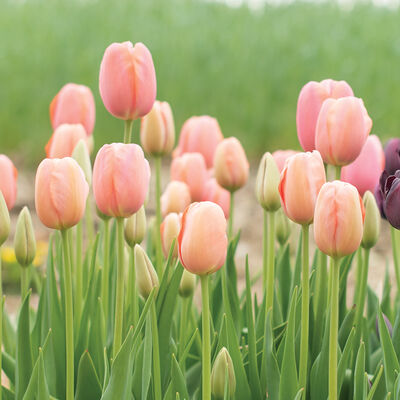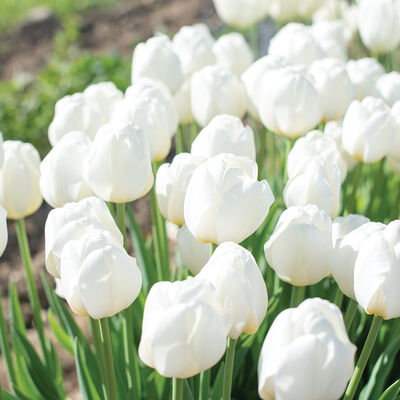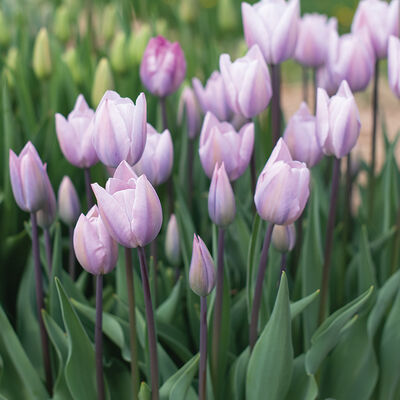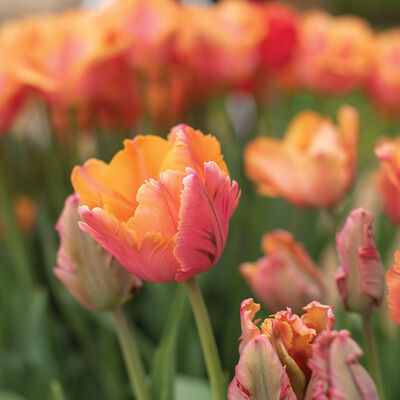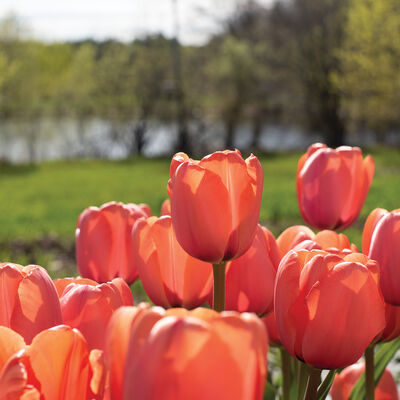Specialty Tulip Bulbs for Cut Flower Production
We trial and select varieties specifically for their performance as cut flowers, offering varieties that demonstrate large blooms, long and sturdy stems, a sophisticated color palette, and a range of bloom times for an extended season.
Types of Tulips
Single tulips
Single tulips are the classic bloom that we all know and love. This category includes the full range of tulip colors. Our single tulips bloom in late spring.Double tulips
Double tulips are prized for cut flowers, offering striking double blooms in a full range of colors. Double tulips have a peony-like appearance and are sometimes referred to as Peony-flowering or Peony type tulips. We offer double tulips that bloom from mid-spring through late spring.Parrot tulips
Parrot tulips have flowers with distinctive, scalloped/fringed edges. We offer parrot tulips in a range of white, purple, and blush colors. Parrot tulips bloom in mid-late and late spring.Darwin Hybrid
Darwin hybrid tulips flower mid-spring and are prized for their large blooms and strong stems. This type naturalizes better than other types, persisting in the garden for multiple years with proper care. Most Darwin Hybrids are single tulips, although ‘Akebono’ is an example of a double Darwin Hybrid. Our Darwin Hybrid varieties bloom in mid spring.
Tulips for Naturalizing/Perennializing
Many modern tulips do not naturalize for dependable blooms year after year. If you are looking for tulip varieties that will persist as a perennial in the garden for multiple years, then we recommend choosing Darwin Hybrid varieties. To encourage successful perennialization, deadhead blooms that you do not harvest and make sure you leave foliage intact on the plants that you do harvest. Proper irrigation and soil amendments also assist in naturalization; see our Tulip Production Tech Sheet for more information.
Tulip Mixes
Looking for a curated mix for your cutting or perennial garden? Our ‘Blush Blend’ is a sweet mix of Darwin Hybrid varieties in vibrant hues of pink, peach, and red shades.
Bulk Tulip Bulbs
We offer bulk quantities (100 and 500 bulb quantities) for most varieties that we carry.
How to Grow Tulips
For growing guidance, we offer the following:
- Tulips Key Growing Information: a simple overview of essential growing information.
- Tulip Production Tech Sheet: an in-depth growing guide from planting to harvest.
Additional resources on growing tulips:







